Military Knowledge: Ground Launched Small Diameter Bomb
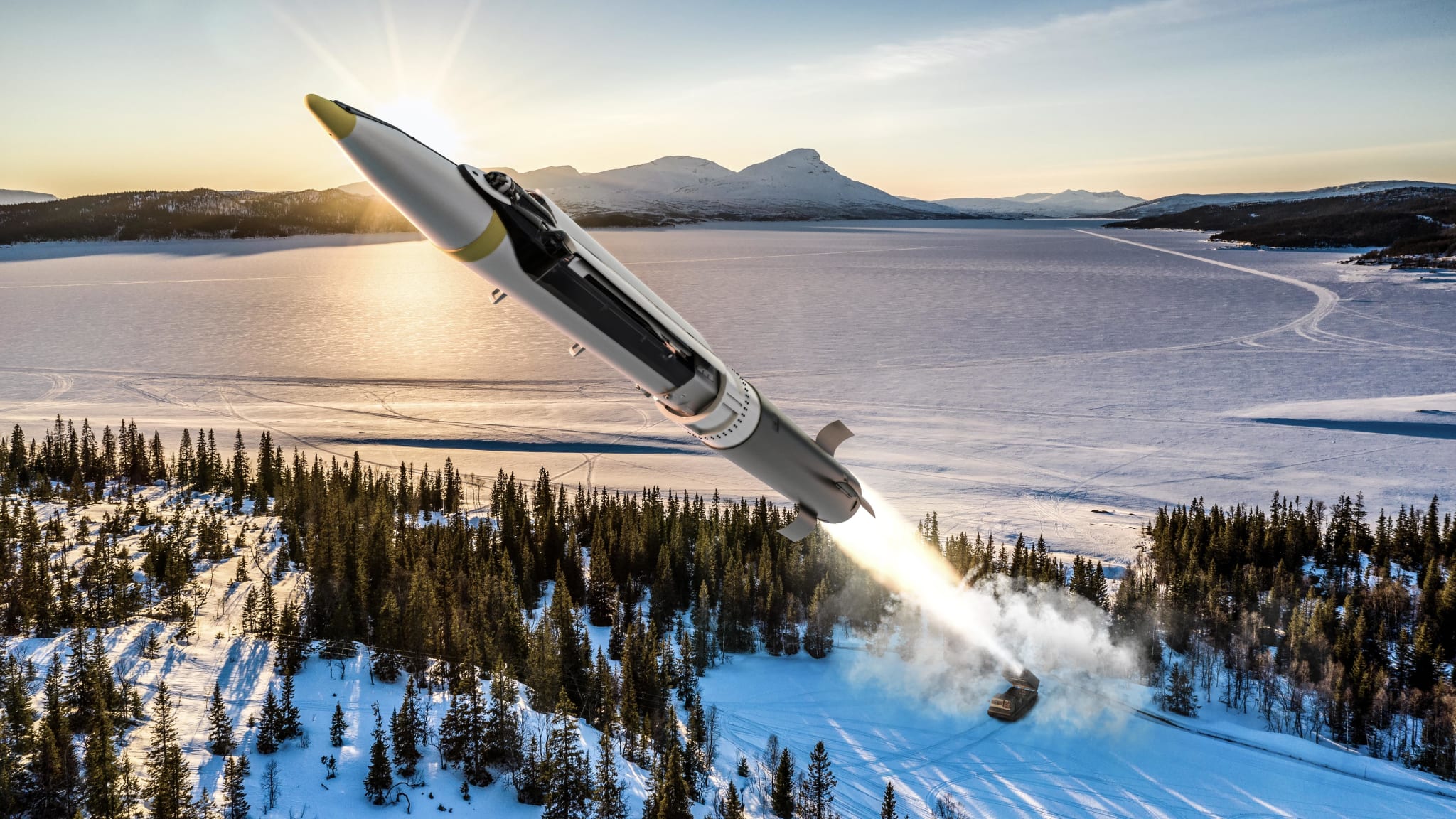
The GLSDB is a ground-launched low-diameter precision munition. This bomb is a combination of the M26 rocket and the GBU-39 SDB, which was developed and produced by SAAB and Boeing for the purpose of being used and launched from the variety of ground launchers.
The Ground Launched Small Diameter Bomb (GLSDB) is a weapon developed by Boeing and the Saab Group to allow Boeing’s GBU-39 Small Diameter Bomb (SDB), originally developed for use by aircraft, to be ground-launched from a variety of launchers and configurations. It combines the SDB with the M26 rocket, enabling it to be launched from ground-based missile systems such as the M270 Multiple Launch Rocket System and M142 HIMARS. It can also be fired from its own launch container, allowing it to be fired from sea.
In 2014, the two companies Saab and Boeing signed a contract to design and produce a new weapon with the aim of being cheap and available, by developing an “inter-stage adapter” to connect the SDB to an M26 rocket. Also providing expertise are two Norwegian companies, Nammo for booster rocket and Nordic Shelter for launchers.
The Norwegian company Nordic Shelter, which specializes in the construction of shelters, hospitals and other mobile devices in the form of 10- and 20-foot containers, has participated in the manufacture of a special launcher for GLSDB, which is placed inside a 20-foot container.
Twelve M26 rockets at a time can be launched from M270A MLRS, six at a time from HIMARS. By using a special container launcher, the possibility of deception becomes easier and makes locating and targeting more difficult for the enemy. This special launcher carries and fires 6 rockets.
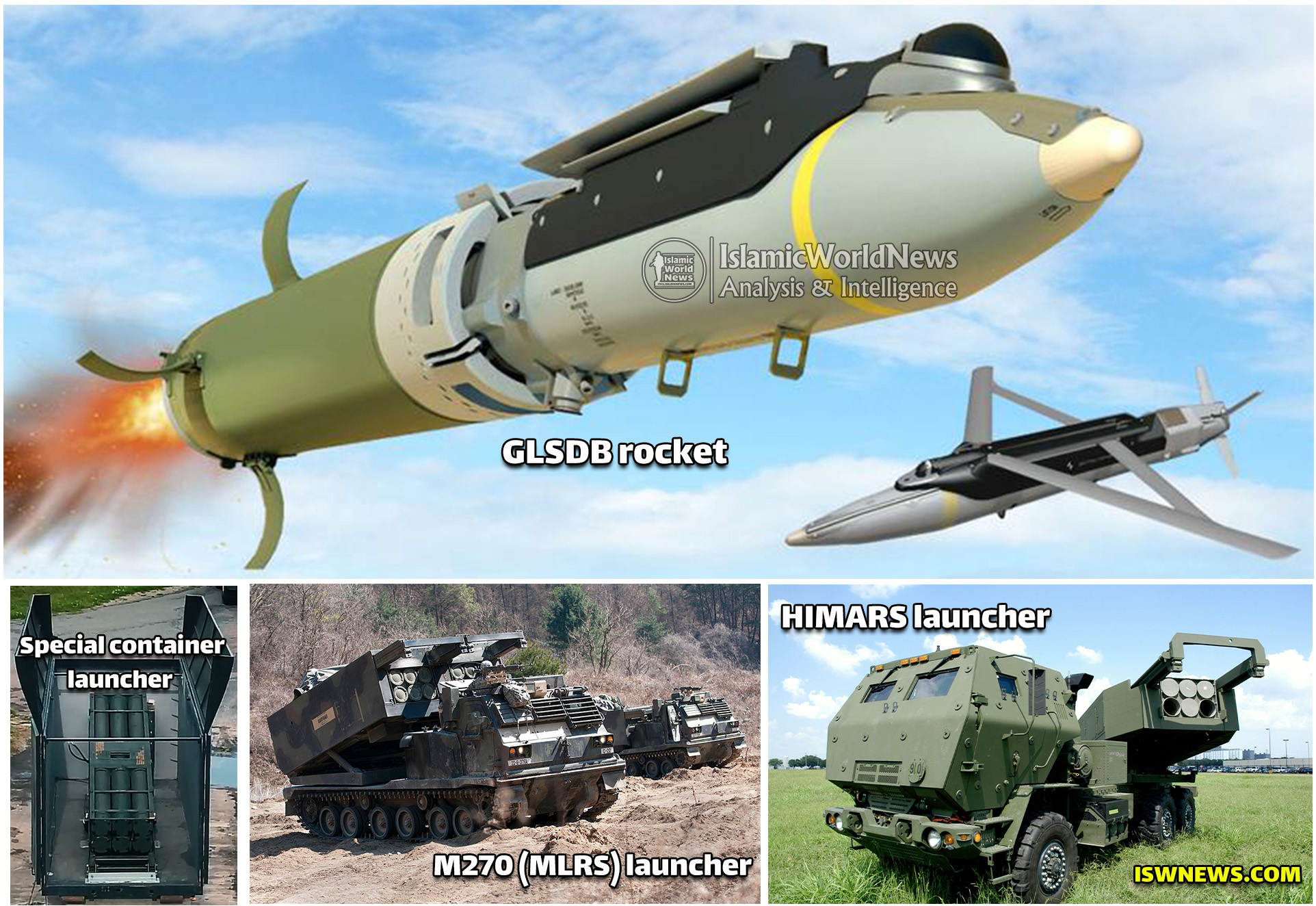
In a 2017 demonstration, the GLSDB engaged a moving target at a distance of 100 km. The SDB and rocket motor separated at altitude and the bomb used a semi-active laser (SAL) seeker to track and engage the target. A 2019 test extended this range to 130 km against a target at sea. The laser-guided SDB had previously been tested successfully using targets travelling at 80 km/h.
The mass production of this weapon has started in 2023, and Taiwan, as the only buyer of this system, has postponed receiving its order at the request of the United States to meet Ukraine’s need for this weapon. On June 22, Laura Cooper, the deputy assistant secretary of defense for Russian, Ukrainian and Eurasian affairs, told Congress that despite development and production problems, the weapon would be available sooner than the fall of 2023.
M26 rocket:
M26 is a MLRS rocket with a cluster warhead. The M26 and M28 rockets have been produced since 1980 and were the only rockets available for the M270 system until 2005. The production of the M26 rocket has been stopped since 2001, and its last operational use dates back to the invasion of Iraq in 2003. In accordance with George W. Bush’s directive to destroy 1% of unused US cluster munitions, the US military in 2007 earmarked separate funds for the creation of special facilities for the destruction of MLRS rockets and ATACM missiles at the Anniston Defense Ammunition Center in Alabama and at the Letterkenny Ammunition Center in Pennsylvania. The Army requested $109 million to destroy 98,904 M26 MLRS rockets between 2007 and 2012. There are reports that the project was stopped in 2010. That is, before Trump’s order in 2017 to stop the destruction of cluster munitions, it is not clear how many of the 506,718 M26 rockets in 2001 are left today.
GBU-39/B small diameter bomb (SDB I):
The GBU-39/B (SDB I) small-diameter bomb is a 110 kg precision-guided bomb designed to provide the aircraft with the ability to attack with a greater number of precision-guided bombs. The first type of this bomb, which is produced by Boeing, entered service for the first time in 2006, and the second type is produced by Raytheon. This bomb contains 16 kilograms of explosives and has the ability to penetrate one meter of reinforced concrete that is one meter deep in the ground.
The accuracy of this bomb is one meter and it is possible to connect to link 16 and use network-based warfare facilities. The first type of US small diameter bombs are widely available today and are being replaced by newer models. As a result, the parts needed to produce GLSDB are widely available.
The M26 rocket and the SDB I bomb are connected to each other using an inter-stage adapter. The way the GLSDB bomb works is that after firing, the rocket brings the SDB up to a sufficient altitude and speed, the SDB separates from the rocket and the wings open, allowing the bomb to glide towards its target. Unlike conventional rockets, this bomb did not go through the ballistic path and it is possible to change the path after the separation of the SDB; Although it reduces its range.
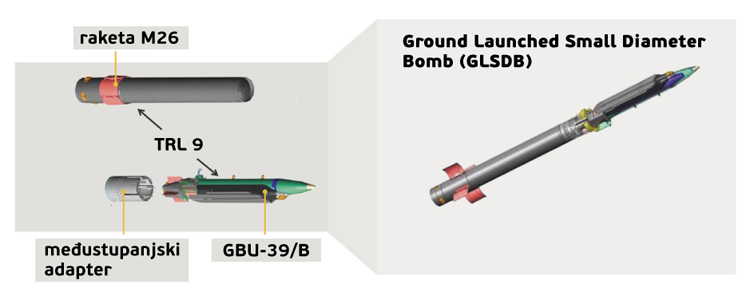
Unlike traditional artillery weapons, the GLSDB offers 360-degree coverage for high and low angles of attack, flying around terrain to hit targets on the back of mountains, or circling back around to a target behind the launch vehicle. The GLSDB has a range of 150 km, or can hit targets 70 km behind the launch vehicle. This weapon can be configured to detonate before hitting the ground to cause more casualties. Or detonate with a delay after impact to penetrate deep (such as trenches). The type of guidance of this bomb is GPS, which makes its accuracy up to one meter, and it is also very resistant to jamming of electronic warfare.
Although the exact price of GLSDB has not been announced, each SDB bomb costs about 40,000 dollars for the US Army, and the M26 rocket is also an obsolete inventory in the US Army. Also, some money must be spent on the inter-stage adapter, developing a launcher-container, and other costs of developing and producing GLSDB by Boeing and SAAB. By comparison, the cost of an M31 missile, a variant of the GMLRS, is estimated to be only $500,000, although this may be the “export price” which is always higher than what it would cost the US military. According to US Army budget projections in 2023, the price will be around $168,000 per GMLRS. which has two examples of 70 and 150 km. It seems that every GLSDB unit has a lower price than this model.
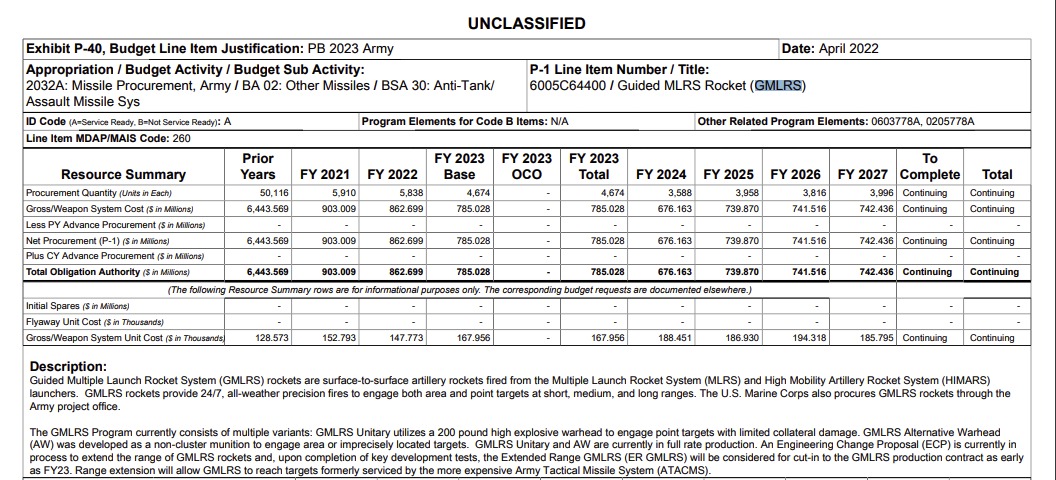
The purpose in developing the weapons was to offer poorer countries the strike capacity of more expensive and advanced air forces. Jim Leary, director of global sales for Boeing, told reporters in 2019: “It really fits across a broader customer set because we’re taking an existing capability, maximizing it and creating an opportunity [for countries] that don’t have the ability to have a robust air force.”
Specifications of the GLSDB:
Range: 150 km
Warhead: Fragmentation multipurpose warhead
Warhead weight: 93 kg, Explosive fill: 16 kg
Accuracy: 1 meter CEP
Guidance: GPS and laser
Launch platform: M270 MLRS and M142 HIMARS Or can be launched from its own launch container
Designer: Boeing and Saab Group
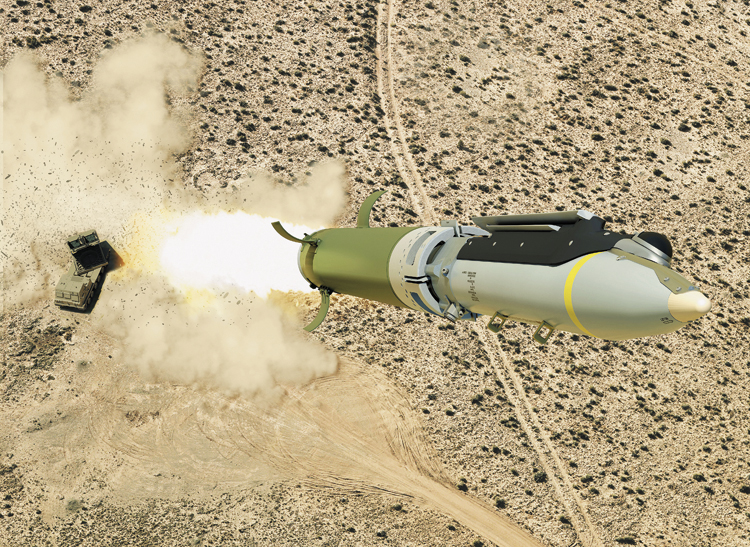
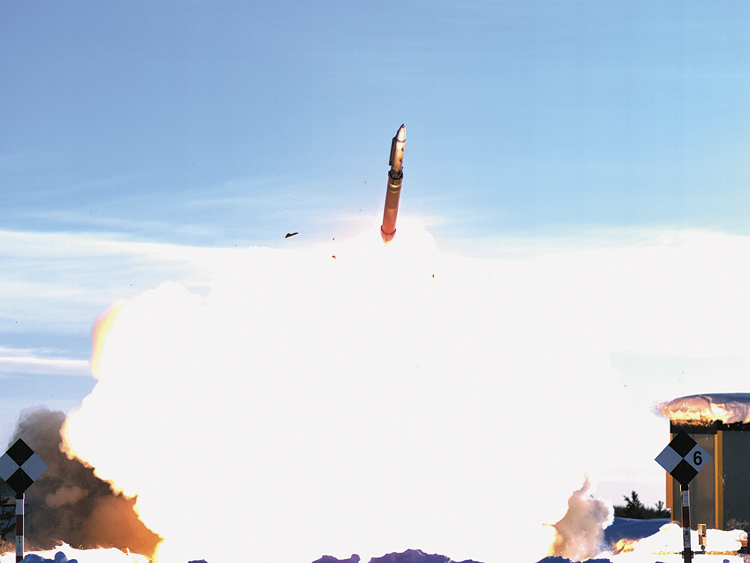
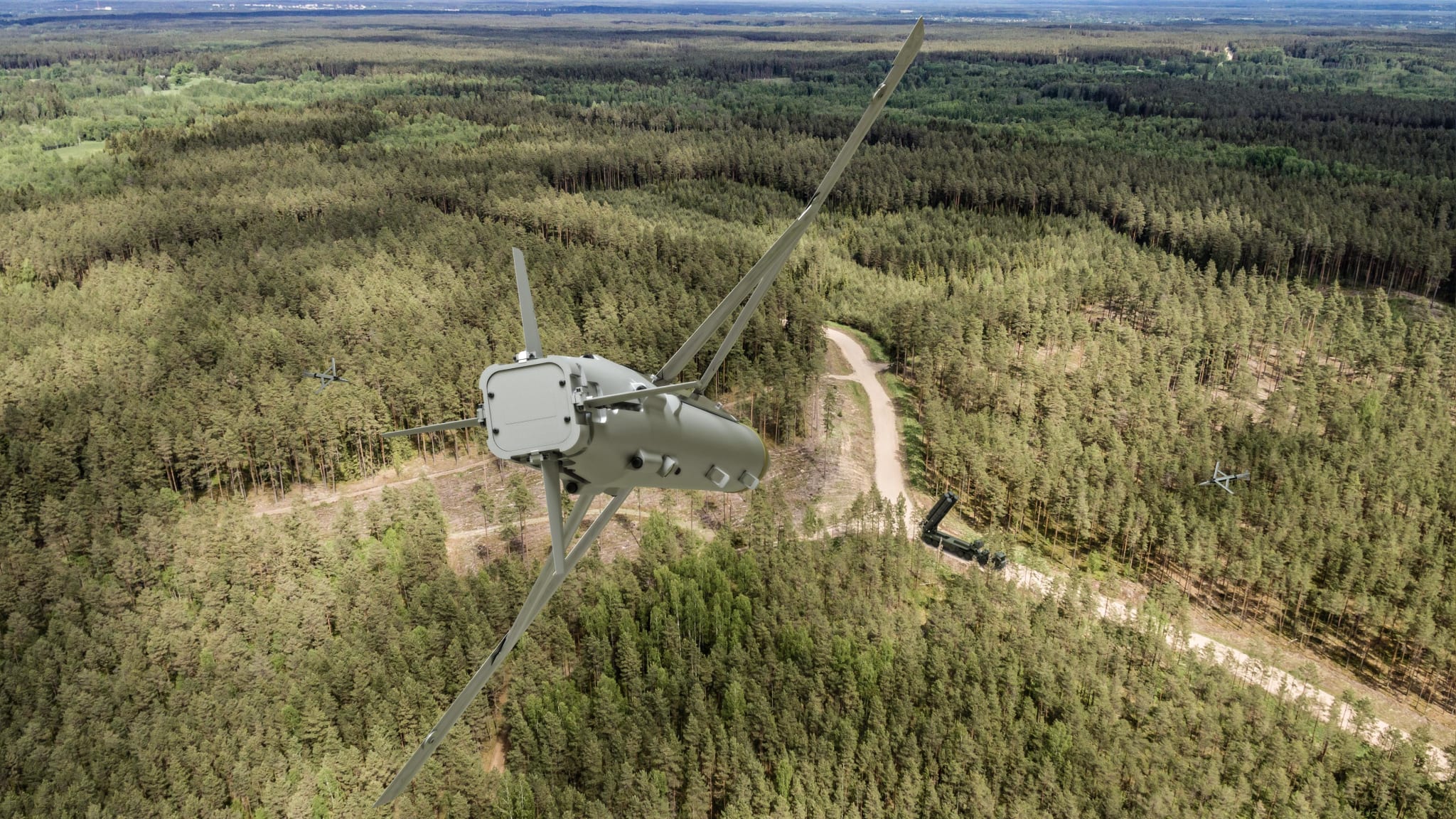

Source:
United States Cluster Munition Ban Policy
Boeing, Saab Unveil Ground Launched SDB
Ground-Launched Small Diameter Bomb (GLSDB)
Ukraine to receive first GLSDB missiles no earlier than autumn – Pentagon
Ground Launched Small Diameter Bomb
Ground-Launched Small Diameter Bomb




Comment